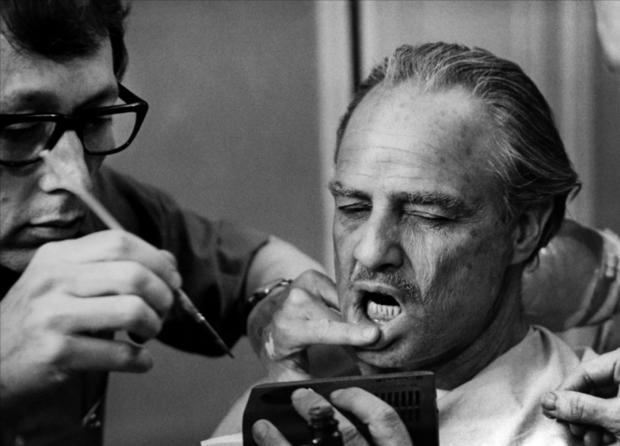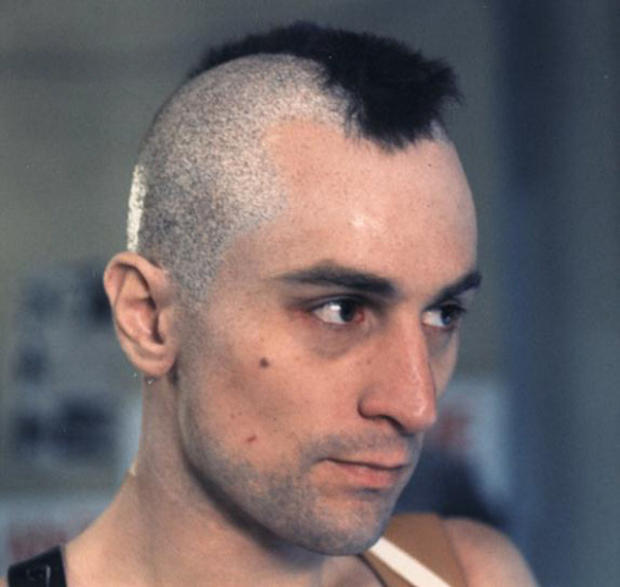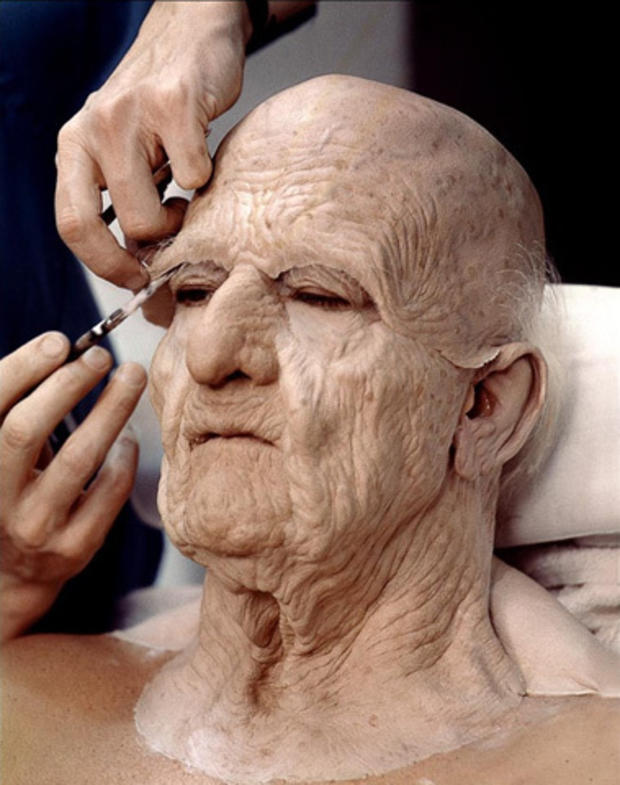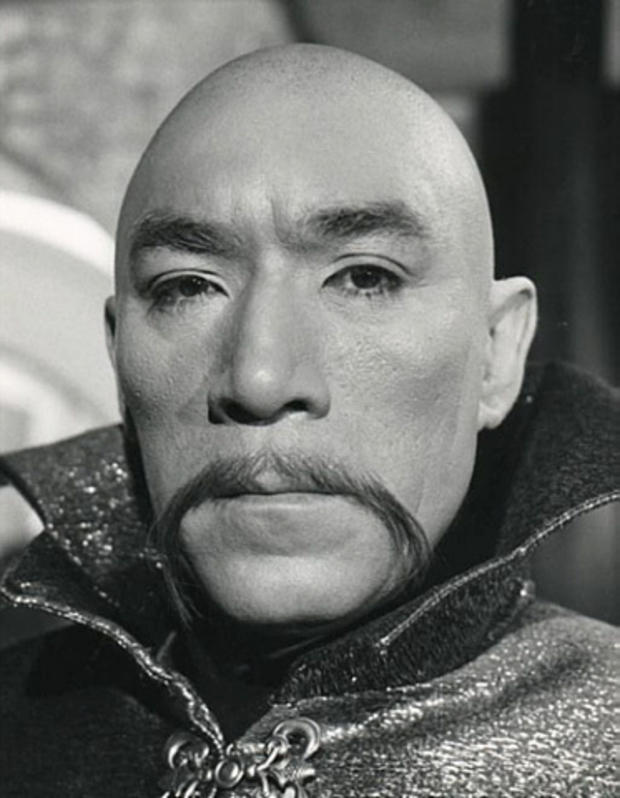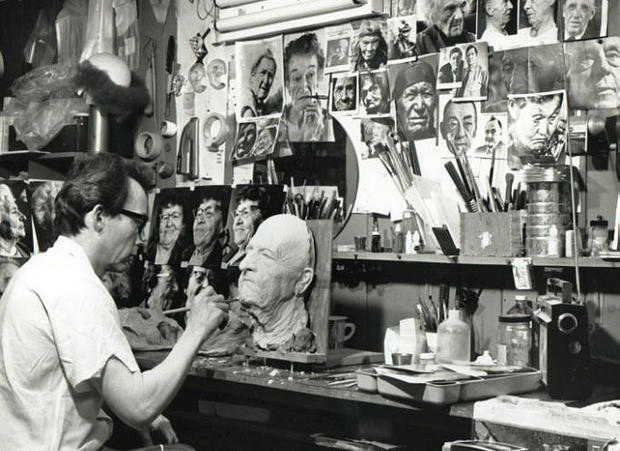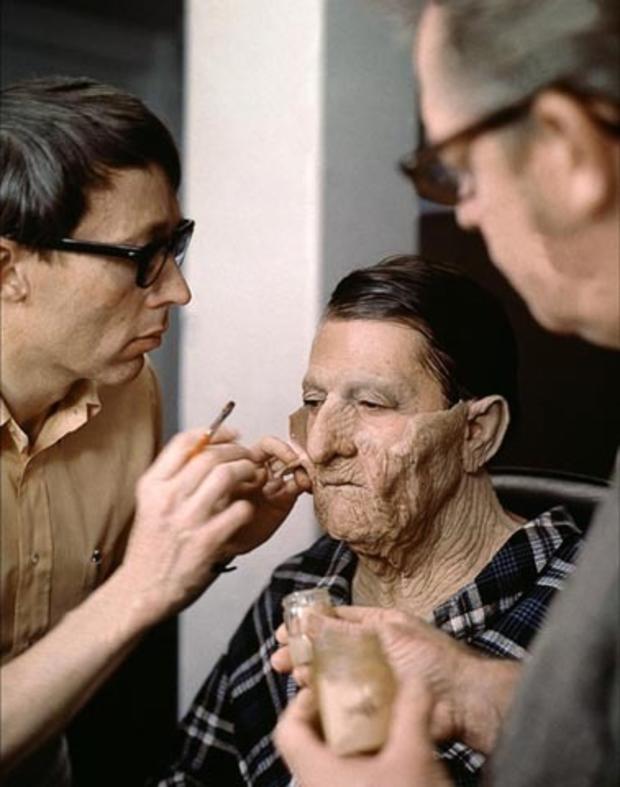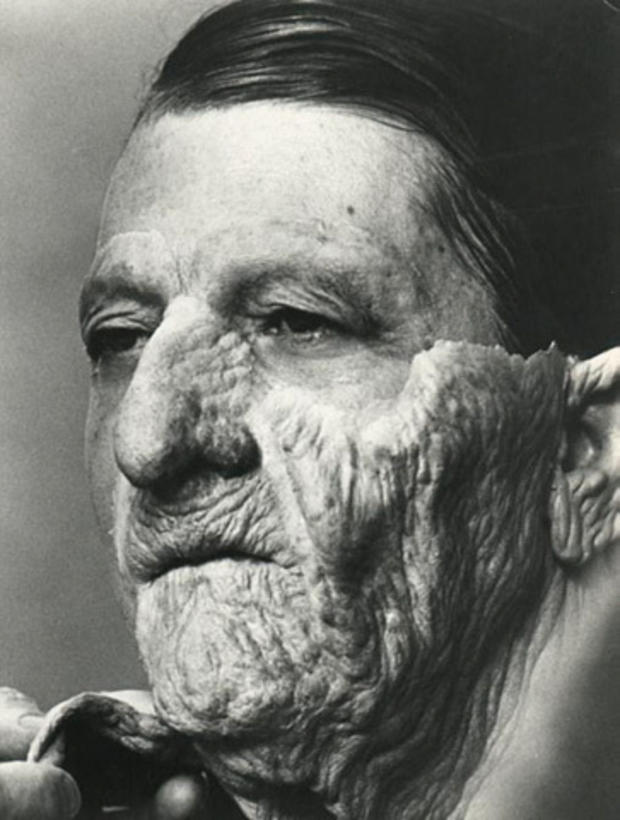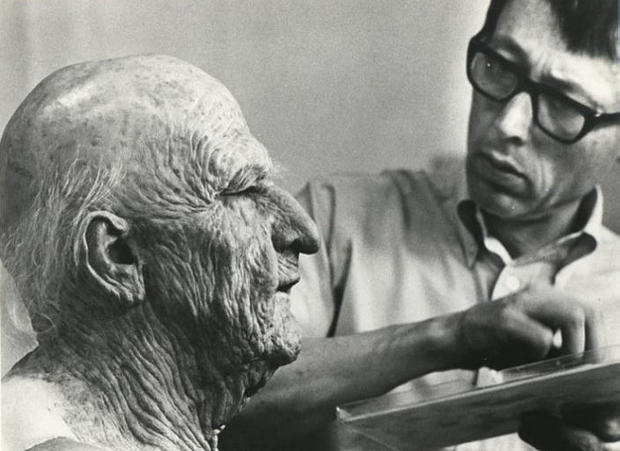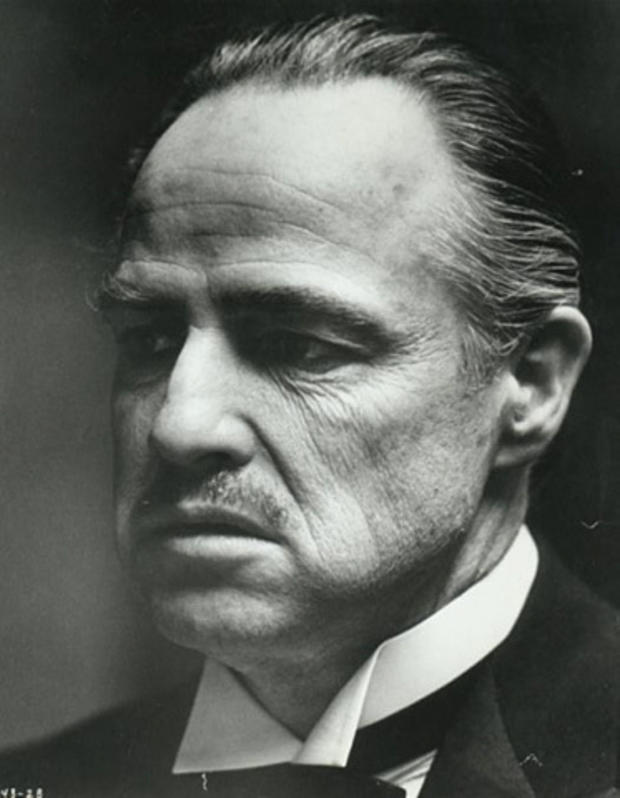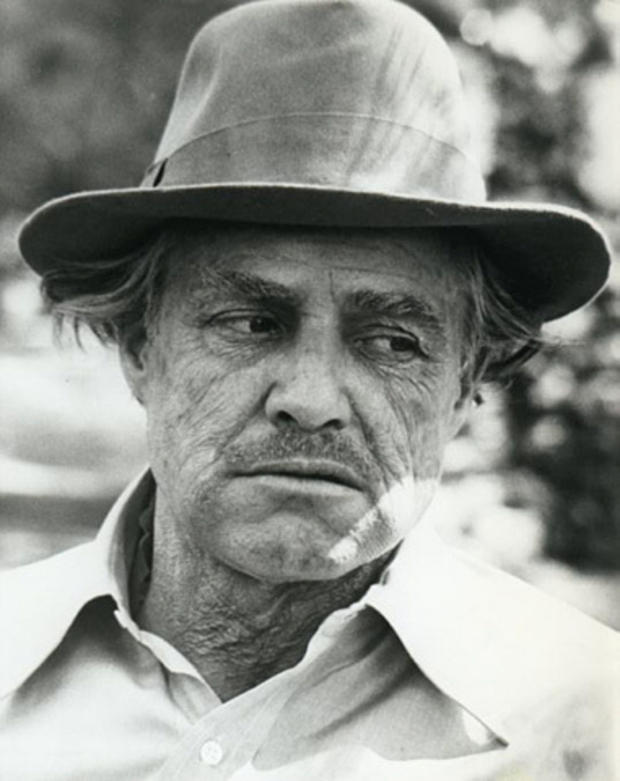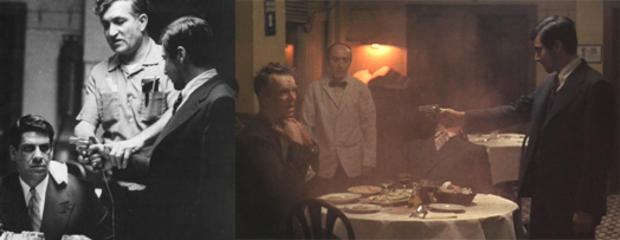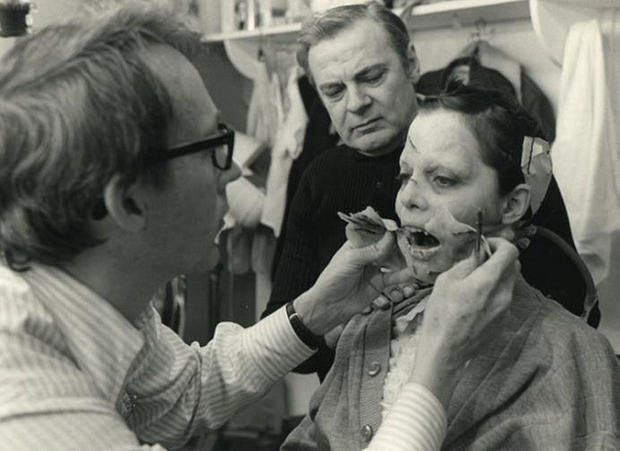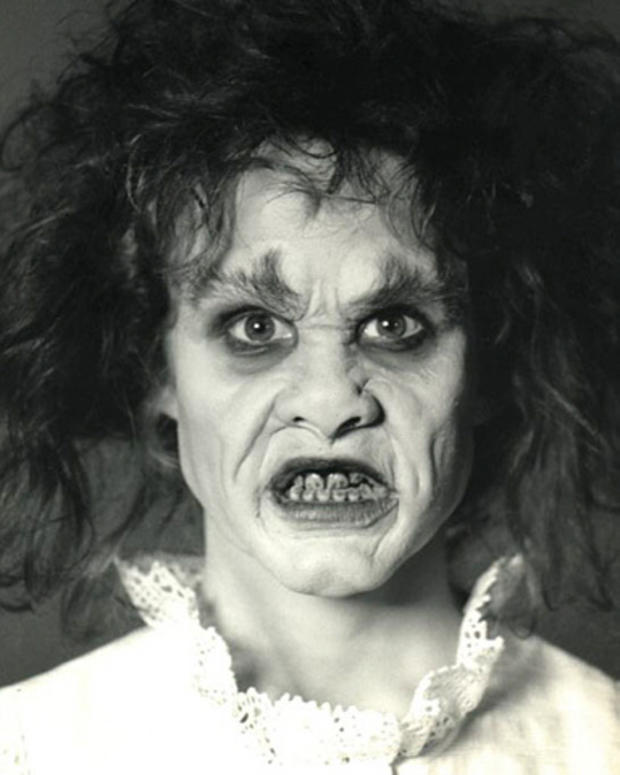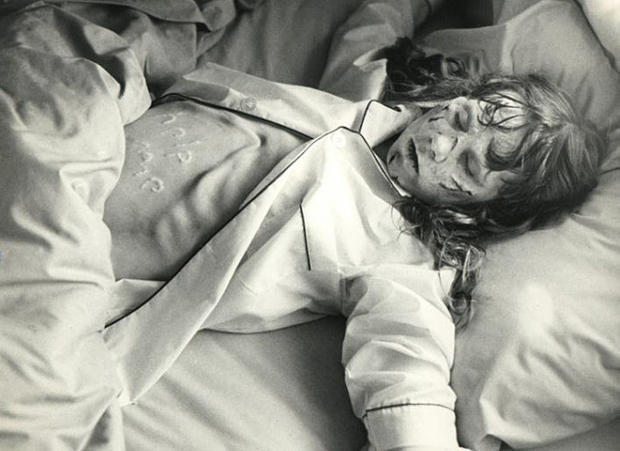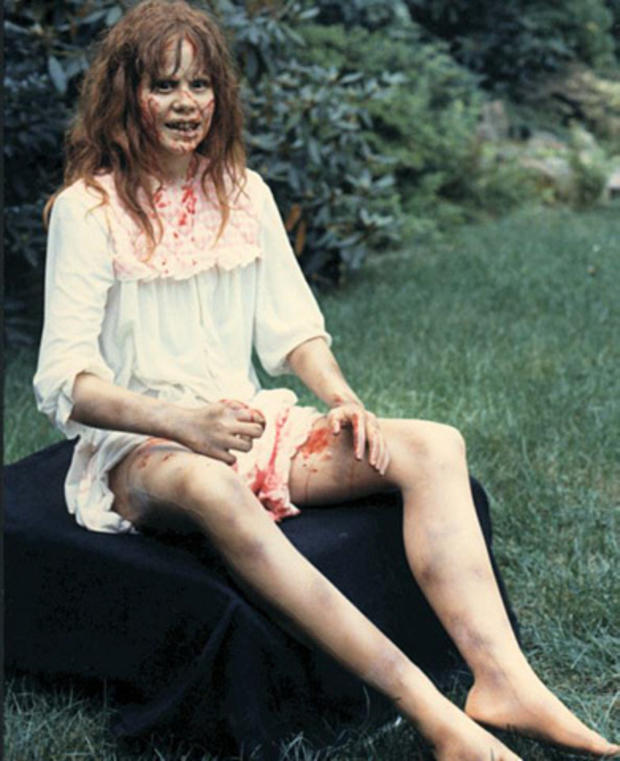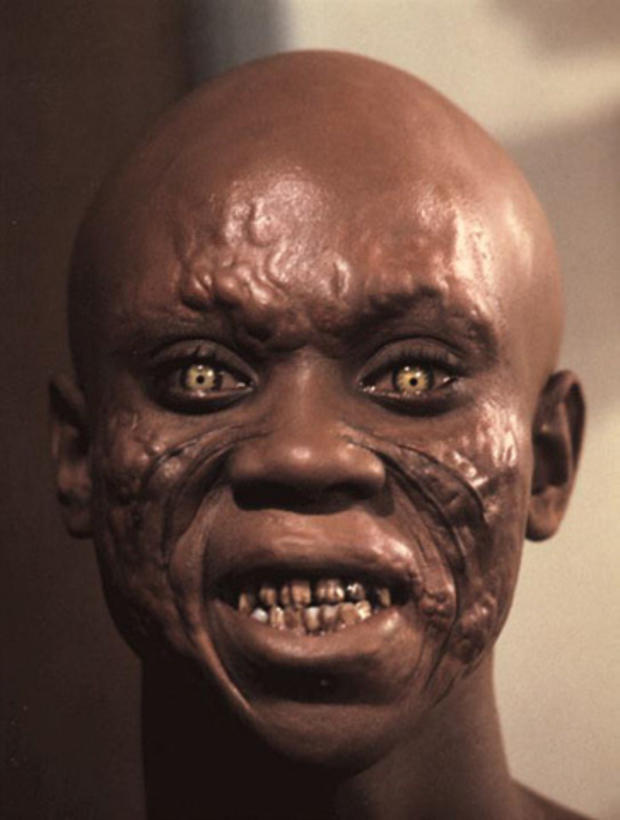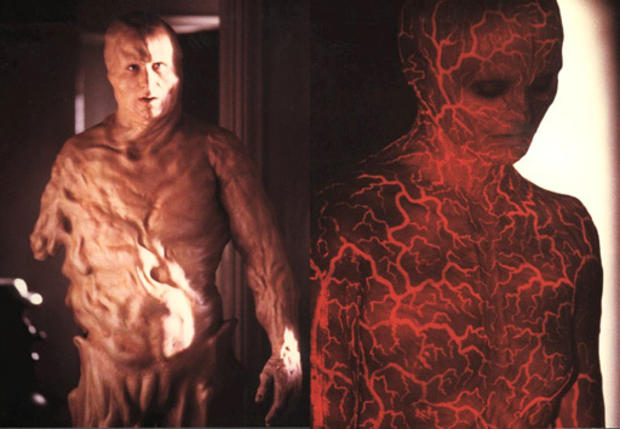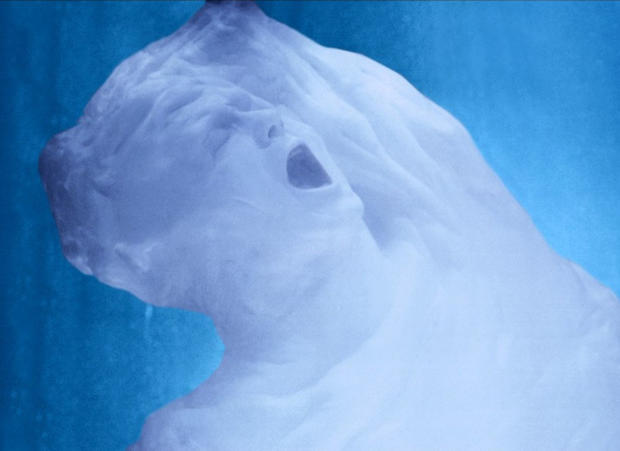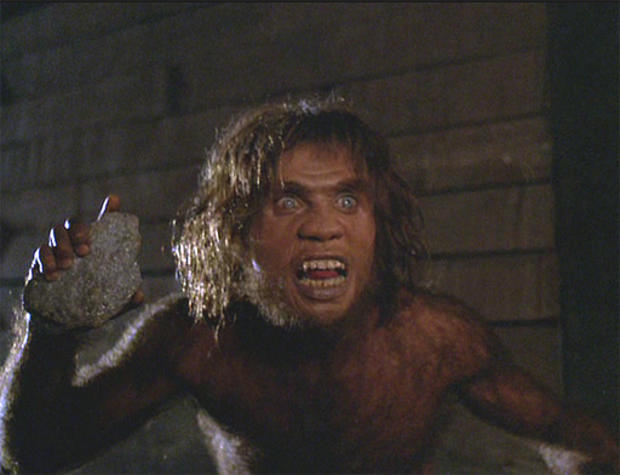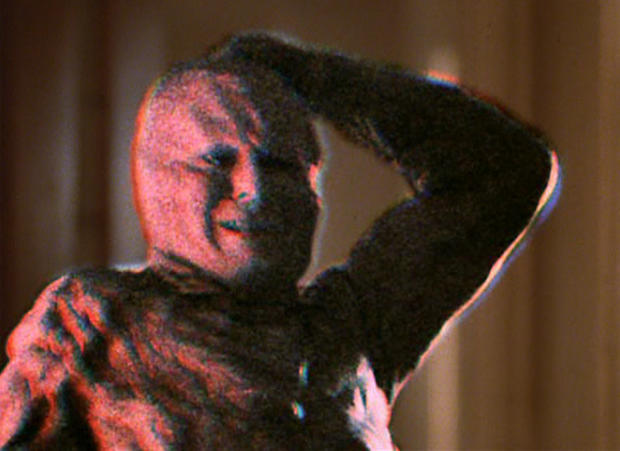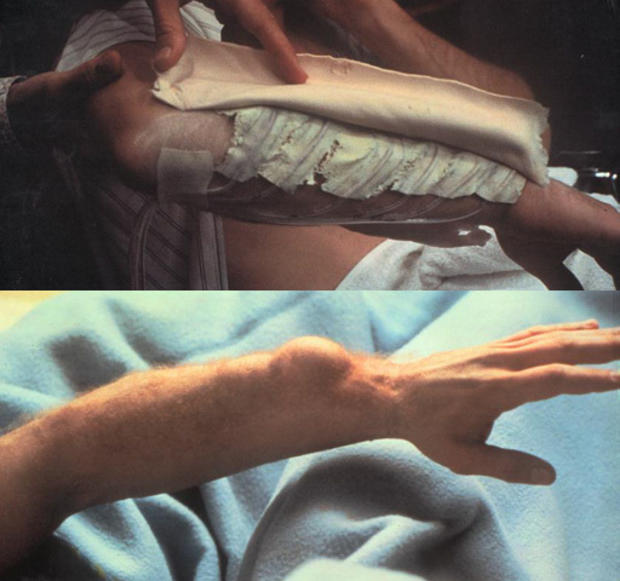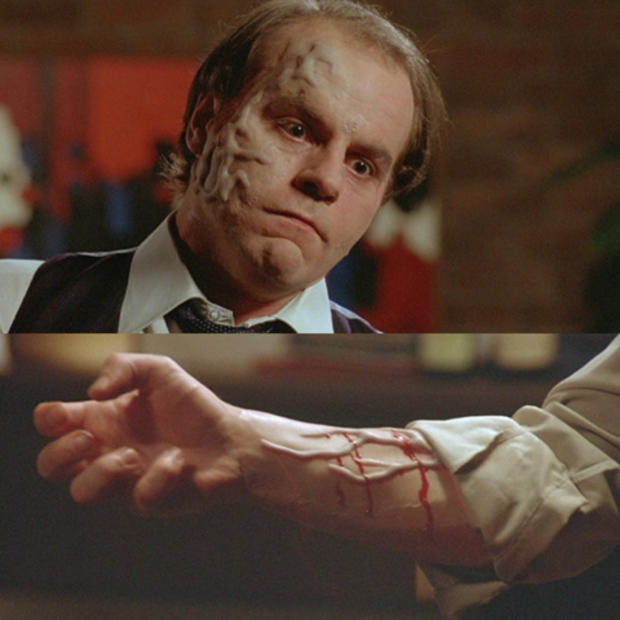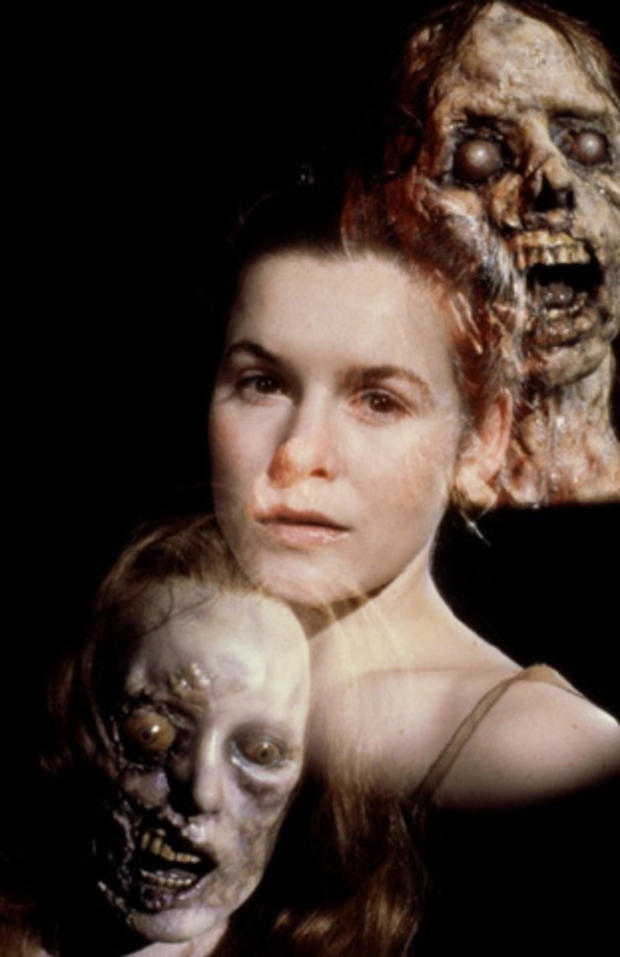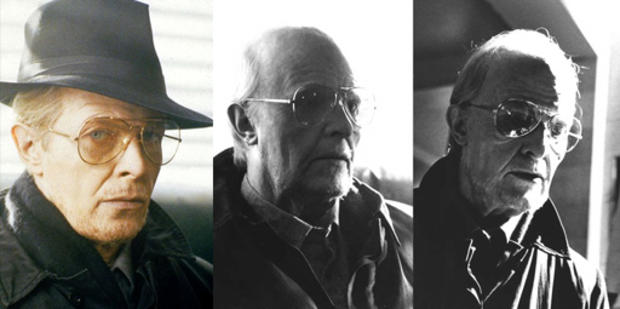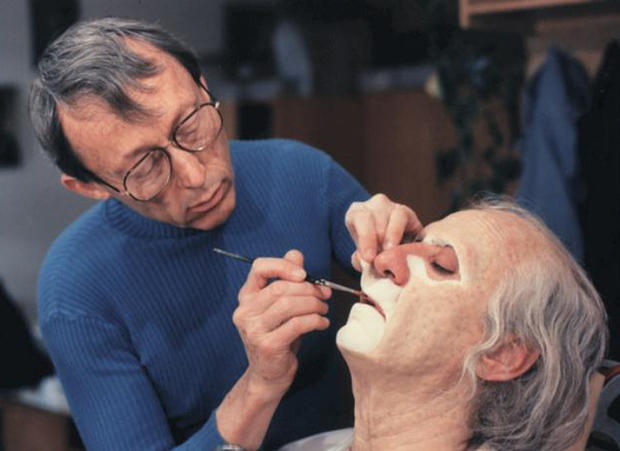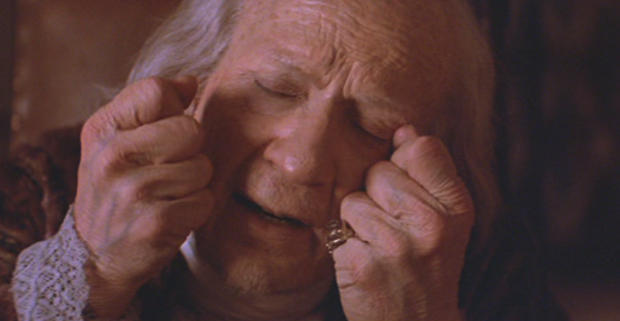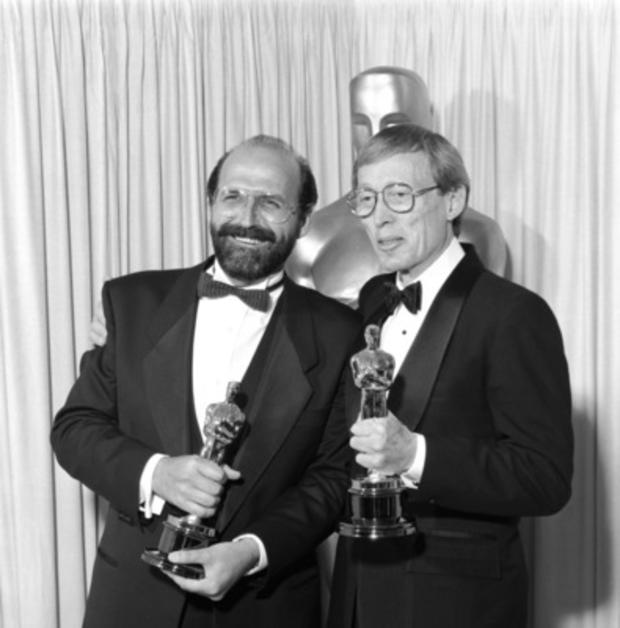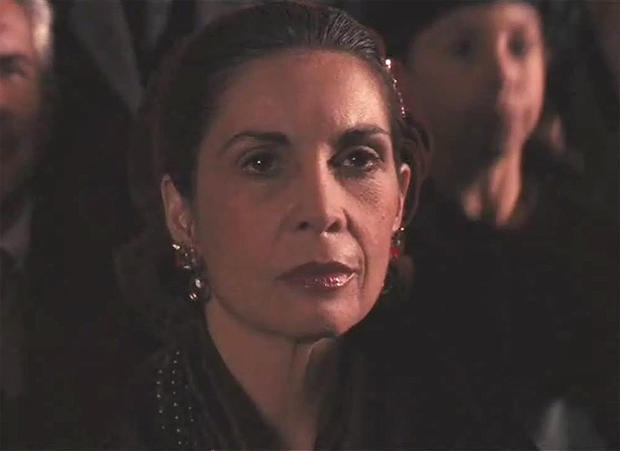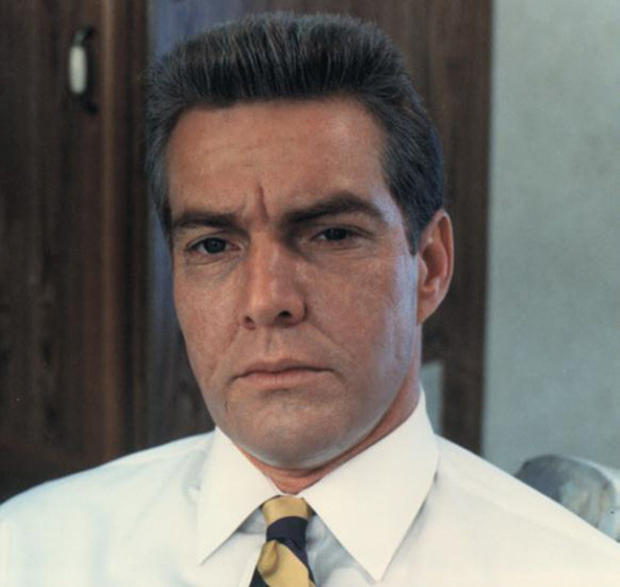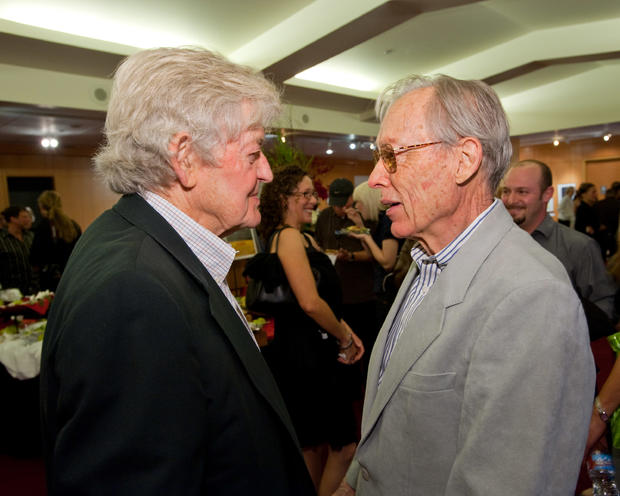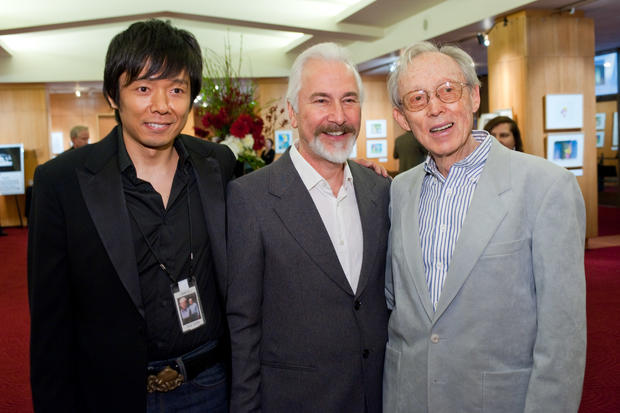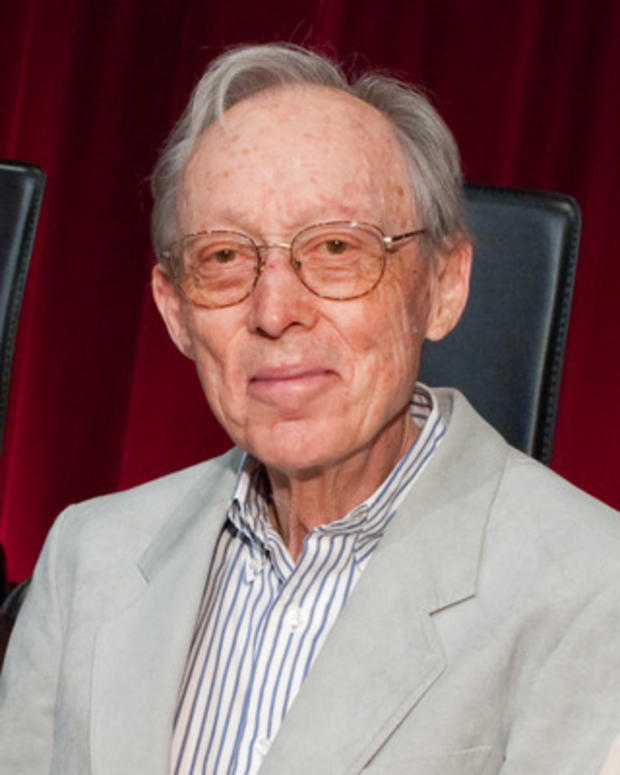Movie makeup master Dick Smith 1922-2014
Dick Smith applies makeup to Marlon Brando for his performance as Don Vito Corleone in "The Godfather" (1972).
Smith, one of the first makeup artists to win an Academy Award when the
category of Best Makeup was introduced 30 years ago, was a leading
practitioner of his craft since joining NBC Television in 1945 as its
first staff makeup artist. His experience in live television, and his
mastery of old age makeups, led to a remarkable film career that
includes such outstanding work as "The Godfather," "The Exorcist,"
"Little Big Man," and his Academy Award-winning old-age makeup designs
on "Amadeus."
Dick Smith's death at age 92 was announced on Thursday, July 31, 2014, by his protege, fellow makeup master Rick Baker.
By CBSNews.com senior producer David Morgan
"Cyrano de Bergerac"
Dick Smith applies makeup to actor Jose Ferrer for a 1949 TV production of "Cyrano de Bergerac," incorporating a latex nose and a beard of laid crepe wool.
As the popularity of live television grew, so did Smith's workload; he supervised a staff of 20 artists at NBC. He also needed to work quickly; makeup changes sometimes had to be completed during commercial breaks.
"Taxi Driver"
Robert De Niro in "Taxi Driver" (1976). In addition to all the blood effects - and there were a LOT of blood effects in "Taxi Driver" - Smith also created De Niro's shaved head makeup, using a plastic cap and introducing a method of blowing on chopped-up hair to look shaven.
"The Moon and Sixpence"
Laurence Olivier as an artist who develops leprosy in a 1959 TV production of "The Moon and Sixpence." Olivier was an actor enamored with the makeup arts - he relished becoming a new person with a new nose, for example. Smith said Olivier praised his work by saying the makeup "does the acting for me."
Nearly two decades later, Smith worked with Olivier again on "Marathon Man."
"Way Out"
For the 1960s macabre series "Way Out," Smith had to create makeup for actor Barry Morse playing a character who has had half his face erased.
"Little Big Man"
Dustin Hoffman having makeup applied by Dick Smith, to play Jack Crabb, the hero of "Little Big Man" (1970), at age 121.
While many makeup artists of the time created single masks to be worn by actors - simple to create in a mold and apply - Smith's expertise was in creating makeup incorporating several separate latex appliances - for chins, cheekbones, brows, jowls. Though they could take longer to design and apply, the multiple-appliance approach gave actors more flexibility in their expressions and greater realism.
"Requiem for a Heavyweight"
Anthony Quinn as the aging prizefighter in "Requiem for a Heavyweight" (1962). It was Smith's first feature film credit. He used appliances on Quinn's cheekbones, nose, eyelids, frontal bones and ears, and added a dental "plumper" to puff out the cheeks.
Smith's first work in Hollywood was a last-minute assignment for "It's a Mad, Mad, Mad, Mad World," to create masks for stuntmen stepping in for the stars in the film's riotous climax. He had three weeks to create the masks for nearly a dozen performers.
"Marco the Magnificent"
An Oriental makeup for Anthony Quinn as Kublai Khan in "Marco the Magnificent" (1965). Makeup by Dick Smith.
"Mark Twain Tonight!"
Although Hal Holbrook had played humorist Mark Twain numerous times on stage, Smith used more detailed makeup to physically transform the actor for the TV production "Mark Twain Tonight!" (1967). Smith won an Emmy Award.
"Arsenic and Old Lace"
Fred Gwynne - best known as Herman Munster from "The Munsters" - starred in a 1968 TV production of the comedy "Arsenic and Old Lace" as Jonathan Brewster. Like Raymond Massey in the 1944 film, Gwynne was made up as the recipient of rather poor plastic surgery that made him look "just like Boris Karloff!" (On Broadway, the part was actually played by Boris Karloff.)
"Little Big Man"
Dick Smith in his Larchmont, N.Y., studio designing the appliances for Dustin Hoffman's character in "Little Big Man." He conducted extensive research and spent six weeks sculpting the overlapping appliances for the head and hands.
"Little Big Man"
Smith designed makeup for actor Dustin Hoffman's character in "Midnight Cowboy." Two years later, Smith was in charge of turning the 31-year-old Hoffman into a 121-year-old man, for "Little Big Man" (1970).
"Little Big Man"
Dustin Hoffman having makeup applied by Dick Smith, to play Jack Crabb, the hero of "Little Big Man" (1970), at age 121.
"Little Big Man"
Dustin Hoffman having makeup applied by Dick Smith, to transform Hoffman into a 121-year-old man. The design included extremely thin eyelid appliances and colored contact lenses. The makeup took five hours to apply.
"Little Big Man"
The finished product. Hoffman's performance spans ages 17 to 121 - the widest stretch for an actor in film history, according to the "Guinness Book of Records."
"The Godfather"
Marlon Brando in "The Godfather." The actor was in his mid-40s when he played the aging Don Corleone. He famously submitted to a videotaped audition with crude makeup, fooling Paramount studio executives who had earlier believed Brando was wrong for the role. For the film, Smith thinned and colored the actor's hair, used old-age stipple (a gum that tightens the skin, creating realistic wrinkles), teeth discoloration and dental plumpers that fit between Brando's lower teeth and cheeks.
"The Godfather"
Marlon Brando in "The Godfather." Smith also applied aging spots and shadows to the actor's skin. "My approach is always to use as little makeup as possible," Smith said. "It's easier for the actor, it tends to look more natural and so forth, and it takes less time to put on."
"The Godfather"
John Cazale as Fredo Corleone witnesses the attempted murder of his father, Don Corleone, in "The Godfather." "On 'Godfather I' there was very little time for preparation," Smith said in 1990. "And because of the way Coppola works - he likes to be very spontaneous - things were kind of winged as we went along." On the morning of filming the attempted assassination of Don Corleone, Smith recalled, "he wanted a couple of gallons of blood in the gutter. 'Francis, I wish you'd let me know. I don't carry around, you know, GALLONS of blood! You didn't do it in those days - you had a little bottle of blood. So we had to scrounge around now, send people out, runners off to find Karo syrup and food color and stuff like that and make up enough blood for the scene."
"The Godfather"
The traditional dividing line for perpetrating on-screen violence has been, if a bullet hit is on skin, it's the makeup artist's job; if it's on clothing, it's the special effects department's responsibility. "The Godfather" provided an opportunity to blur that line, as Smith worked closely with the special effects crew to create realistic mob hits. At left: Effects man Joe Lombardi instructs Al Pacino on how to handle a pistol wired to explosive squibs hidden inside latex appliances in the foreheads of actors Al Lettieri (Sollozzo) and Sterling Hayden (Police Captain McCluskey). The explosive squibs contained fake blood, and a further explosive on the back of Lettieri's head mimicked a rather profusive exit wound.
"The Godfather"
Not all went smoothly on "The Godfather": Due to a technical snafu on the first take of the toll booth attack on Sonny Corleone (James Caan), the numerous tiny "blister" appliances which contained cavities filled with blood (to be ripped open with monofilament threads) to simulate bullet hits had to be abandoned because of the time needed to prepare them for a second take as they were losing daylight. So while Sonny dies in a monumental hail of gunfire that rips him and his car to shreds - about 80 hits on Caan's body alone - no bullet hits are actually seen on his face. (Smith applied some blood to Caan's prone body after the fact.)
"The Exorcist"
Dick Smith applies makeup to Linda Blair, who played a young girl suffering demonic possession in "The Exorcist" (1973). In addition to turning a pretty young girl into a horribly-deformed creature, Smith was also responsible for some of the film's gruesome special effects. Here he camouflages a "vomit device" within an appliance worn by Blair.
"The Exorcist"
A early makeup test for Linda Blair which even Smith admitted was "way too much."
"The Exorcist"
The final makeup design for Linda Blair in "The Exorcist."
"The Exorcist"
The words "Help me" that appeared on Blair's body were created by a solvent drawn onto her skin, filmed as the letters were dried by hot air.
"The Exorcist"
Dick Smith and his assistant Rick Baker created a model of Linda Blair for a scene in which the possessed girl turns her head waaaaay too far around.
"The Exorcist"
Dick Smith also created old age makeup for Max Von Sydow, who played Father Merrin in "The Exorcist." Sydow was about 44 years old when the film was made; His complex appliances took about 3.5 hours to put on.
"Exorcist II: The Heretic"
For the sequel "Exorcist II: The Heretic" (1978), Smith created this demonically-possessed African boy.
Other horror films for which Smith contributed bloody and macabre makeup designs were "Burnt Offerings," "The Sentinel" and "The Fury" - and for "The Stepford Wives," Smith created fake breasts for Katherine Ross (as the "replacement" wife).
"The Godfather Part II"
An attempted hit on Don Fanucci in "The Godfather Part II" (1974), when he has his throat slit with a razor, was cut from the final film but later inserted in the re-edited television mini-series broadcast in 1977. The illusion was created by makeup artist Dick Smith and effects man A.D. Flowers with foam latex appliance around the actor's throat that would gush blood when opened. For Vito Corleone's murder of Fanucci, Smith made a duplicate of the revolver with a rubber shaft, so that De Niro would not accidentally cause injury when he stuck the gun in actor Gaston Moschin's mouth and fired. "I mean, you take a regular metal gun and go like this, like you mean it? I mean, an actor could easily overact!" said Smith.
"Altered States"
For the Ken Russell sci-fi flick "Altered States" (1980), in which William Hurt and Blair Brown are changed into mutations (it's kind of difficult to explain), Dick Smith created full-body foam latex suits. The veins on Blair's "anatomy suit" were painted with Scotch-Lite that glowed when lit and photographed using front projection.
"Altered States"
William Hurt in "Altered States."
"Altered States"
For scenes in which William Hurt genetically mutates into a primitive ape-man (it's kind of difficult to explain), facial appliances and yak hair were applied to the body of dancer Miguel Godreau.
"Altered States"
Some of Smith's makeup effects for "Altered States" were distorted by video and optical effects, or were cut entirely - given the editing that the film underwent even after director Ken Russell submitted his first already-hallucinatory cut.
"Altered States"
It's enough to make your skin crawl: William Hurt's arm appears to ripple up and down. An innovation of Smith's that was used in this effect was inflatable "bladders" that were applied under foam latex skin, into which air could be pumped that simulated the rippling skin.
"Scanners"
For the David Cronenberg horror film "Scanners" (1981), Smith contributed designs to a final telepathic duel added in post-production. Smith repeated the pulsating vein effect he'd developed for "The Fury," this time pumping the bladders underneath the fake skin not with air but with fake blood, which could spew forth at opportune moments. Smith also prepared puppets for FX work, such as a head that emits an energy stream.
"Ghost Story"
Smith turned a very young Alice Krige into a very old, very vengeful spirit in "Ghost Story" (1981). Smith created life-size head-and-shoulder puppets based on Krige.
"The Hunger"
David Bowie ages decades in a matter of minutes in a memorable scene from the vampire film "The Hunger" (1983). Makeup by Dick Smith.
"Amadeus"
Smith applies makeup to F. Murray Abraham, who played the composer Salieri as both a middle-aged and elderly man, in "Amadeus" (1984).
"Amadeus"
The finished "old Salieri" makeup, aging Abraham to about 80. "It was the best job I ever had," Smith said.
"Amadeus"
F. Murray Abraham as Salieri in "Amadeus" (1984). Makeup by Dick Smith.
"Amadeus"
Paul LeBlanc and Dick Smith backstage at the 57th Academy Awards ceremony, after winning the Oscar for Best Makeup for "Amadeus."
"The Godfather Part III"
Left: An early test of aging makeup, with appliances and long hair, designed by Dick Smith for Al Pacino's Michael Corleone, that was rejected for "The Godfather Part III." "This was a softer, more Byronic treatment of the hair rather than have it so mobster-looking," Smith said in 1990. "[Pacino] loves long hair. We had more trouble with him on 'Godfather I' because though he was supposed to be straight out of the army he always wanted his hair long. It was always a fight with him to trim it to make it match." Smith had walked off of a film before (he exited "The Deer Hunter" after Robert De Niro's perfectionism over another actor's makeup outdid even Smith's own perfectionism), and he left the third "Godfather" film after director Francis Ford Coppola decided Michael Corleone should have a crew cut and no appliances - AND persuaded Pacino to cut his hair short! - without real discussion or preparation for the makeup staff. (At right: Pacino in the final film, with a crew cut and old age stipple applied by another artist.) "Al, like any good actor, has to do what the boss decides, so he just went along with it," Smith said in 1990. "I'm sure he didn't mind not wearing the appliances; he's not an Olivier in terms of love for makeup, so I'm sure he didn't mind that. To be perfectly honest I don't think that the film is certainly going to suffer for lack of a couple of jowls - that would be absurd to think that anyone's going to miss it, but like other touches I think it would have been a nice one."
"The Godfather Part III"
Talia Shire as Connie in "The Godfather Part III" (1990). Makeup by Dick Smith.
"Talia Shire is very cooperative in terms of makeup," said Smith in 1990, "although she got very upset when without talking to her Francis suddenly decided he wanted her to be fat. And in fact some appliances were made up by a studio in Hollywood for her - a jowl kind of thing - I put them on her when I did Al's makeup for testing, and we were all happy frankly that they didn't work; they weren't right for her. "She has very strong face. Though it's a small face, it's very strong, and with a little old age stipple she looks very tough, a kind of wiry, older Italian person. Her hair is severe. That sort of thing can be quite successful."
"Everybody's All-American"
Dennis Quaid - not as an elderly man but as a "middle-aged, overweight has-been" - in "Everybody's All-American," the last film for which Smith worked on set.
"Middle age make-ups are often harder than older ones because there are no wrinkles to hide things," Smith said. He used appliances on the sides of Quaid's face, a double chin, and some stipple around his eyes.
After this film Smith entered semi-retirement, working as a consultant and designing makeups (for such films as "Reversal of Fortune," "Dad," "Forever Young" and "Death Becomes Her"), and also teaching others his craft.
Tribute
Actor Hal Holbrook and Dick Smith during the reception preceding "A Tribute to Dick Smith: The Godfather of Special Makeup Effects," June 17, 2009 in Los Angeles.
Tribute
Oscar-nominated makeup artist Kazuhiro Tsuji ("Click," "Norbit"), and Oscar-winning makeup artist Rick Baker are pictured with Dick Smith in June 2009. Baker, who grew up as a devotee of the magazine Famous Monsters, became an acolyte and apprentice of Smith's, working as a part-time assistant to his mentor on "The Exorcist." Baker has been nominated for a Best Makeup Oscar 12 times since the category was introduced, and has won seven times - for "An American Werewolf in London," "Harry and the Hendersons," "Ed Wood," "The Nutty Professor," "Men in Black," "How the Grinch Stole Christmas" and "The Wolfman."
Governors Award
Oscar-winning Makeup Artist Rick Baker (right) presents the Honorary Award recipient Dick Smith (left) during the 2011 Governors Awards in the Grand Ballroom at Hollywood & Highland in Hollywood, CA, Saturday, November 12.
Governors Award
Smith said being honored by the Academy was "an incredible joy, one of the greatest I've ever had in my whole life." "I have loved being a makeup artist so much," he said, "but ... to have so much kindness given to me all at once is just too much. I am so grateful."
"The Godfather of Makeup"
By CBSNews.com senior producer David Morgan
For more info:
DickSmithMake-up.com (Official website)
